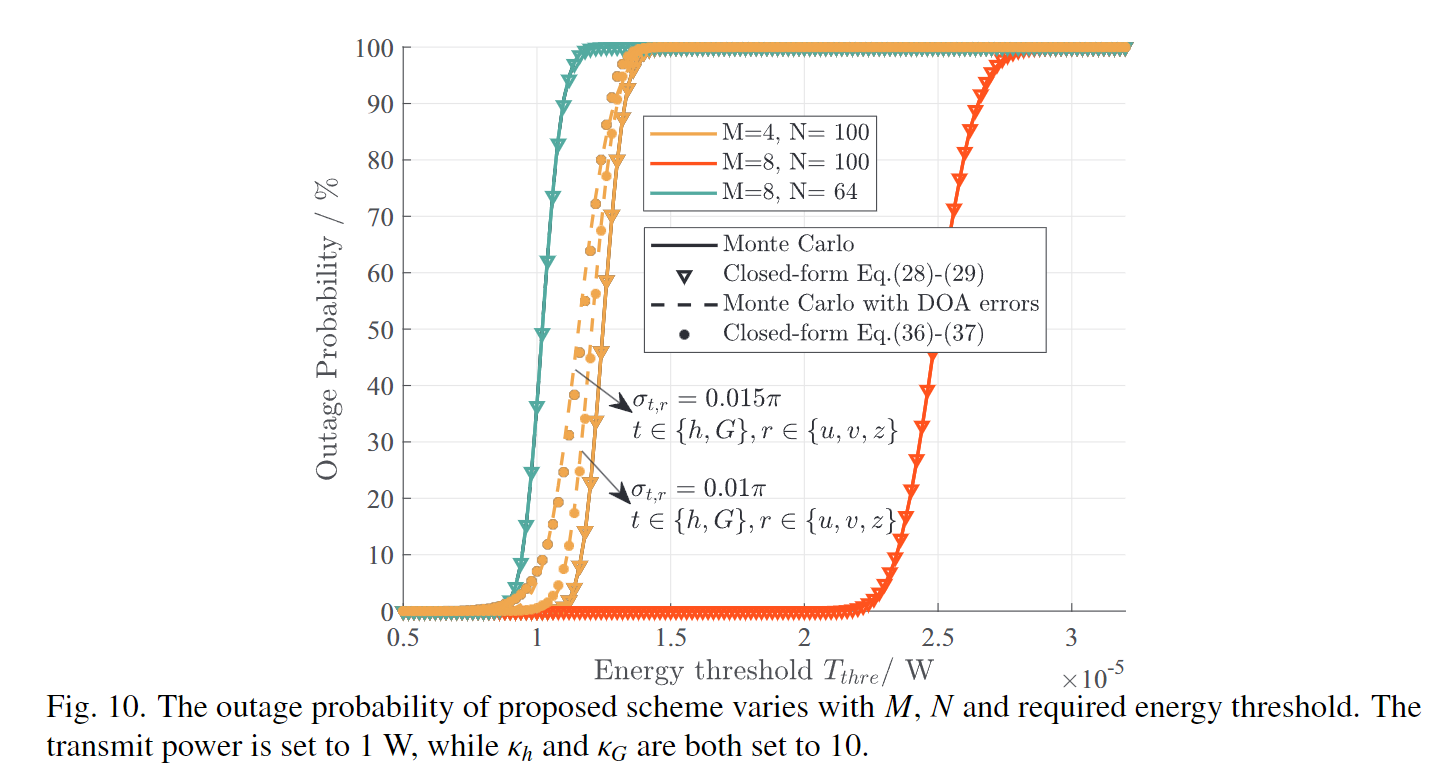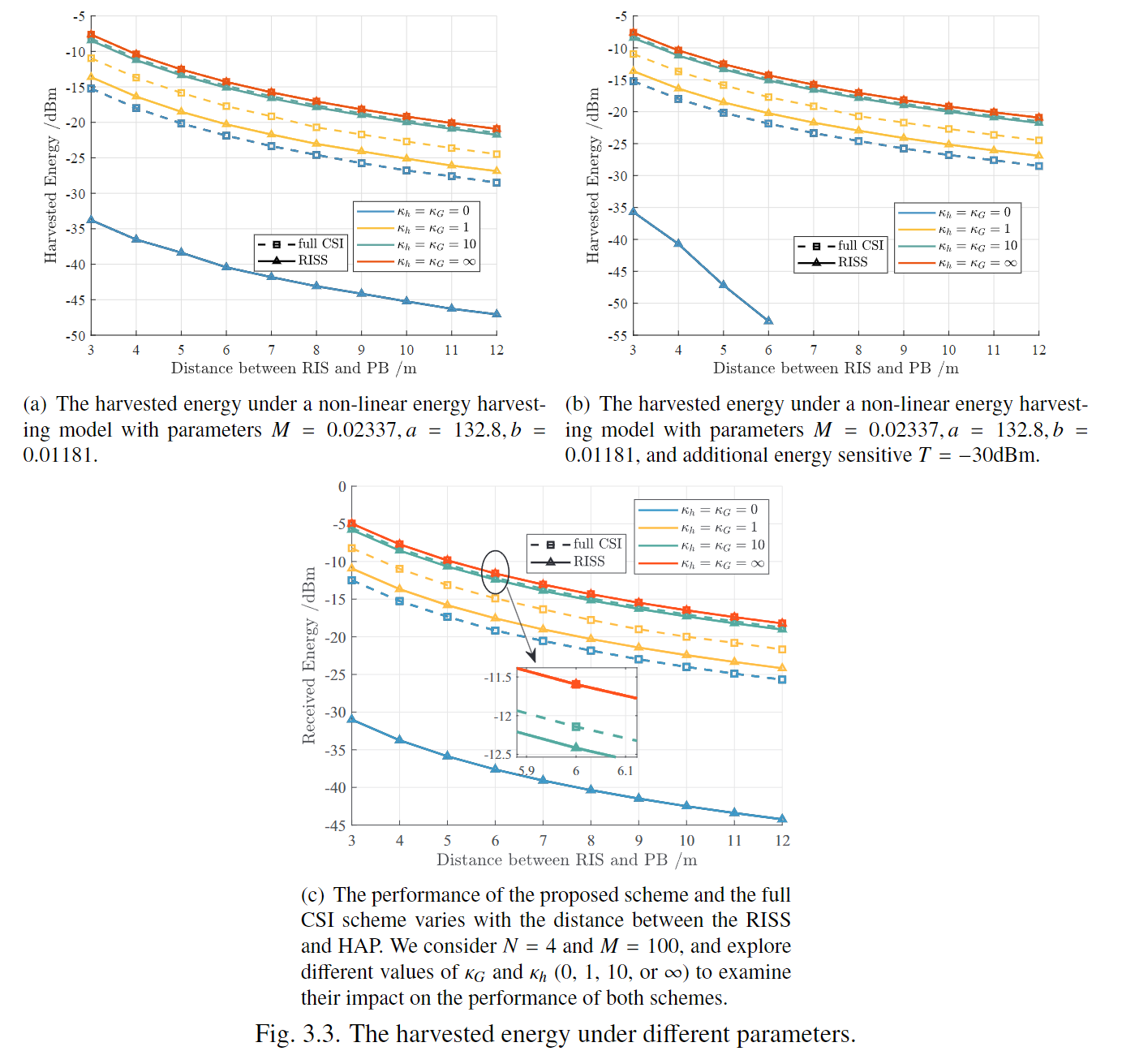My Paper Utils for Manuscript and Response
Paper utils
Refer to MyGithub for the Paper Template.
Table
\begin{table}[]
\centering
\caption{The performance ratio between the MISO and SISO system various with the number of RISS passive elements and Rician factor.}
\begin{tabular}{c|ccccc}
\hline
% \toprule
\textbf{Cond.} & $N\to \infty$& $\kappa_{h,k}\to \infty$& $\kappa_{h,k}\to 0$ & $\kappa_G\to \infty$ & $\kappa_G\to 0$ \\
\hline
\textbf{Ratio}& $M$ & $\frac{NMk_{G}+1}{Nk_{G}+1}\leq M$ & $\frac{Mk_{G}+1}{k_{G}+1}\leq M$ & $M$ & $1$\\
\hline
\end{tabular} \label{table:condratio}
\end{table}
Upper or Lower Equation
\begin{figure*}[ht]
\begin{align}
&\alpha_{E}=\frac{N\left(NM\kappa_h\kappa_G+M\kappa_G+\kappa_h+1\right)^2}{N\left(\kappa_G^2M^2+\kappa_h^2+1\right)+2\left(\kappa_h\kappa_GMN\left(\kappa_GMN+\kappa_hN+N+5\right)+\left(N+1\right)\left(\kappa_GM+\kappa_h\right)+\left(\kappa_GM+\kappa_h+1\right)\right)},\label{eqn:alpha_E}\\
&\beta_{E}=\frac{\left(\varrho_{H2U}P_E\right)^{-1}\left(NM\kappa_h\kappa_G+M\kappa_G+\kappa_h+1\right)\left(1+\kappa_h\right)\left(1+\kappa_G\right)}{N\left(\kappa_G^2M^2+\kappa_h^2+1\right)+2\left(\kappa_h\kappa_GMN\left(\kappa_GMN+\kappa_hN+N+5\right)+\left(N+1\right)\left(\kappa_GM+\kappa_h\right)+\left(\kappa_GM+\kappa_h+1\right)\right)},\label{eqn:beta_E}
\end{align}
\hrulefill
\end{figure*}
Response utils
Refer to MyGithub for the Response Template.
Number the figures in the order shown in the manuscript
\counterwithout{figure}{section}
\setcounter{figure}{9}
\begin{figure}
\centering
\includegraphics[width=0.6\linewidth]{pic/exp5_1.eps}
\setlength{\abovecaptionskip}{0pt}
\setlength{\belowcaptionskip}{0pt}
\caption{The outage probability of proposed scheme varies with $M$, $N$ and required energy threshold. The transmit power is set to 1 W, while $\kappa_h$ and $\kappa_G$ are both set to 10.}
\label{fig:exp5}
\end{figure}
Number the figures in the order shown in the Response
\counterwithin{figure}{section}
\begin{figure}[!t]
\centering
\setlength{\abovecaptionskip}{0pt}
\setlength{\belowcaptionskip}{0pt}
\includegraphics [width=0.4\linewidth]{pic/angleRecip.eps}
\caption{The incident angle (i.e., AOA) for the uplink is represented by $\theta_1$, while the reflection angle (i.e., AOD) is represented by $\theta_2$. Similarly, the incidence and reflection angles for the downlink are represented by $\theta_3$ and $\theta_1$, respectively}\label{fig:angleRecip}
\end{figure}
Multiple figures
\counterwithin{figure}{section}
\begin{figure}[!t]
\centering
{
\subfigure[The harvested energy under a non-linear energy harvesting model with parameters $M=0.02337, a= 132.8, b = 0.01181$.]{\includegraphics[width = 0.48\linewidth]{pic/EnergywithNonlinear.eps}}
\hfil
\subfigure[The harvested energy under a non-linear energy harvesting model with parameters $M=0.02337, a= 132.8, b = 0.01181$, and additional energy sensitive $T=-30$dBm.]{\includegraphics[width = 0.48\linewidth]{pic/EnergywithNonlinearSensitive.eps}}
\subfigure[The performance of the proposed scheme and the full CSI scheme varies with the distance between the RISS and HAP. We consider $N=4$ and $M=100$, and explore different values of $\kappa_G$ and $\kappa_h$ (0, 1, 10, or $\infty$) to examine their impact on the performance of both schemes.]{\includegraphics[width = 0.45\linewidth]{pic/exp3.eps}}
}
\setlength{\abovecaptionskip}{0pt}
\setlength{\belowcaptionskip}{0pt}
\caption{The harvested energy under different parameters.}
\label{fig:3.7}
\end{figure}
Some optional expressions
Entire:
- Many thanks for your valuable comments.
- Many thanks for your positive comment.
- Many thanks for your accurate summarization.
- Many thanks for seeking more explanation.
- Many thanks for your constructive comment.
- Many thanks for your valuable comments.
- Many thanks for observing this flaw.
- Many thanks for your constructive advice.
- Many thanks for your kind advice.
- Many thanks for seeking more justifications.
- Many thanks for raising this concern
- Specifically, the following descriptions have been added in Section II-C to explain how the DT is implemented
- The corresponding performance comparison is illustrated in Figs. 7 and 8 of the revised manuscript, which is copied here along with the descriptions for your convenience
- The corresponding description has been added in Section IV-D of the revised manuscript, which is copied here for your convenience:
Submit to arXiv
- Upload to overleaf
- Submit to arXiv
- Download the template generate from overleaf, and change the path of .eps files to .pdf.
- Normally, choose arXiv.org perpetual
- Upload .tex, .pdf (or .png) and .bbl files one by one to arXiv
- Success!
Reference https://blog.csdn.net/Netceor/article/details/138800086
本文作者: Joffrey-Luo Cheng
本文链接: http://lcjoffrey.top/2023/10/20/paperutils/
版权声明: 本博客所有文章除特别声明外,均采用 CC BY-SA 4.0 协议 ,转载请注明出处!